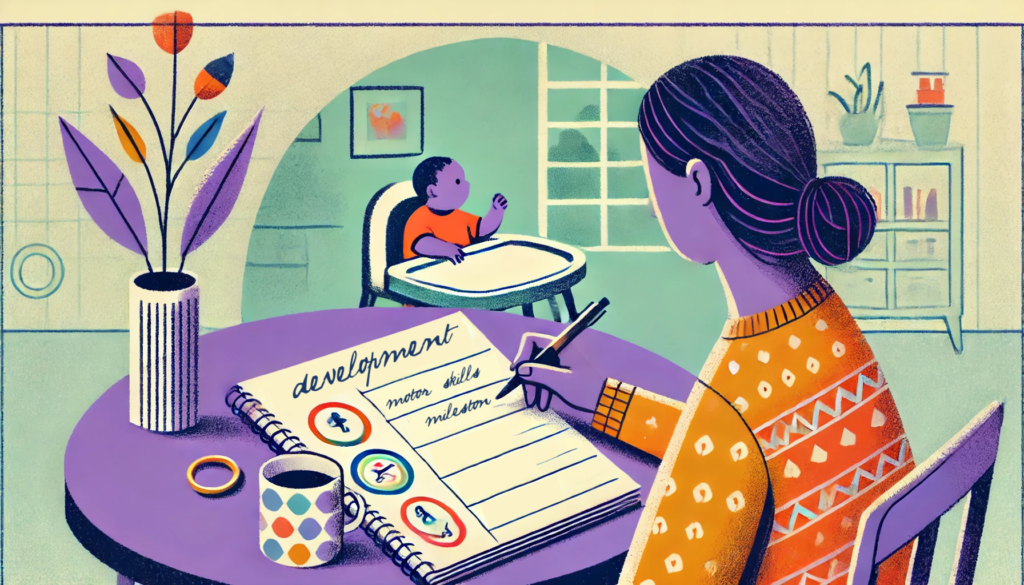Developing Sensory Motor Skills in Children

- Sensory motor skills are techniques your child develops that enable them to move their body and interact with their world.
- Children experience the world through play, crawling, walking, leaning, balancing, visual tracking, and coordination of their movements.
- Sensory and motor systems develop these important skills for everyday activities in your child’s life and encourage language development, cognitive thinking, and problem-solving skills.
- If your child easily experiences sensory overload – or you observe them avoiding certain stimuli like hair brushing – consult with your child’s pediatrician for help with sensory processing struggles.
- Sensory activities engage all children and have specific therapeutic advantages for kids with autism, ADHD, sensory impairment, or sensory processing disorder.
Your baby is born with little other than their ability to perceive. Their foundation for development, growth, and learning starts with observing their sensations to understand, interpret, and eventually interact with their world.
What Are Sensory Motor Skills?
Did you know that children have seven senses — not five — when it comes to sensory integration and perception?
Children take in information through many types of stimuli via their senses of sight, sound, smell, taste, and hearing. However, there are two additional ways children process senses: vestibular and proprioception.
The vestibular system provides balance and spatial awareness, while the proprioceptive system provides feedback about movement and body position. Simply put, they are your child’s sense of balance and body awareness relating to their physical world.
Sensory and motor development is the process of gaining skills to control bodily movements, muscles, and coordination.
Many children find different types of stimulation either relaxing or exciting. Your child may explore both calming or stimulating sensory activities depending on their mood or needs.
How Do Sensory Motor Activities Work?
Sensory motor (also called sensorimotor) activities develop:
- Muscular strength and coordination
- Rhythm, balance, and timing
- Gross and fine motor skills
- Bilateral coordination
- Eye muscle strength and visual tracking
- Vestibular balance and posture
- Primitive and postural reflexes
You can find many great sensory toys for toddlers and children of all ages, and there are limitless ways to create sensory-motor activities for your child at home.

What Sensory Motor Activities Can I Do at Home?
Do-Anywhere Motor Activities
- Jumping: Children of all ages love jumping, and it’s a great activity to provide a lot of vestibular and proprioceptive stimulation. Encourage your child to jump on different surfaces, such as a trampoline or a spongy playground.
- Rolling: Toddlers love to roll around and crawl through fabric tunnels. Also, you can roll and unroll your child in blankets for loads of soft, tactile, sensory information through open-ended play.
- Crab walk: This grade school gym class activity is great for developing core strength and allows children to touch many different surfaces.
Inside Activities
- Baking: Baking is a phenomenal multi-sensory activity, incorporating smell, taste, sight, and proprioception as well as laying the foundation for important new skills. Kids love to be involved in every aspect, from scooping and measuring to mixing, smelling, tasting, and forming the dough into balls. You don’t even need an oven if you’re doing no-bake cooking crafts.
- Sensory bins: Add dried rice, beans, beads, and little toys to a plastic bin and watch your child be delighted for hours. There are limitless ways to create different sensory bins, including fun themes. You can offer them tools to scoop and serve.
- Shaving cream: This is a great sensory experience that you can do in the bathtub or outside. Add a few drops of bath paint to swirl in assorted colors, or drive toy trucks through the foam and create new patterns and explore.
- Dough: Playing with dough, either the toy store version or homemade, is a wonderful sensory experience to develop fine and gross motor skills. Infuse the dough with scents for extra sensory input.
- Finger paints: Playing in paint provides loads of enjoyable sensory and motor interaction for kids to explore and get artistic. They can create new forms, express their feelings, or create works of art. Bathtub paints are good options for mess-free sensory activities.
- Play with food: Babies and toddlers enjoy being able to squish, smell, mash, taste, touch, see, and take in the sensations that foods provide. Try things like bananas, mango, avocado, beans, and pasta. Bigger kids enjoy making art by gluing on macaroni, pretzels, or sprinkles on paper. Or try making fancy bento boxes or DIY pizzas. Many kids like licking lemons to make silly sour faces and experience the different sensations of taste.
- Flashlights: Playing with lights by exploring different patterns of flashing lights and making shadows is so much fun for children. Kids also enjoy playing treasure hunt by searching for hidden objects with their flashlights, encouraging your child’s development of their brain and vision.
- Puzzles: Dot-to-dot, mazes, and hidden object puzzles are fantastic ways to develop your child’s visual tracking abilities.
- Bath and Lotion: Everyday tasks can provide great sensory play. Many children enjoy the scents and sensations of slowing down and enjoying every aspect of bath time, soapy bubbles, the water, and applying lotion after.
Outdoors Activities
- Sandboxes: Sand provides a wonderful tactile experience that allows babies and big kids to play freely and get messy. Children enjoy digging in the sand with their hands and feet or using tools that develop their motor function and hand-eye coordination.
- Toss and catch: Kids will naturally explore tossing and catching a variety of objects with different textures. Encourage this by offering increasingly complex or silly objects like stuffed animals, balloons, frisbees, several sizes of balls, or toys.
- Go on a walk: Nature spotting and exploration provides sensory play in everyday activities. Encourage your child to touch leaves, grass, dirt, or flowers. Talk about what you see – the colors, textures, and sounds.
- Animals: Visit a petting zoo or a friend’s pup if you don’t have a pet of your own. Animals are wonderful therapeutic companions who also provide opportunities to touch soft fur or bumpy scales.
- Blow bubbles: Kids love to play with bubbles or blow into whistles and pinwheels, anything that moves with air. These are great teaching tools for breath support and control.
For even more ideas, take a look at our 21 DIY sensory activities for infants.

How Can I Tell if My Child Has Sensory Motor Difficulties?
Signs that your child may be struggling with sensory perception regulation include:
- Clothing preferences: Being sensitive to the fit, tags, and texture of fabrics to the point that he will only wear one type of clothing.
- Hair and teeth brushing: If your child dislikes having his hair or teeth brushed because of the sensation. Many sensory-sensitive children dislike haircuts for this reason, also.
- No touching: Not enjoying touching or cuddling in the way other children his age appear to.
Consult with your child’s doctor and seek occupational therapists if you’re struggling with some of these behaviors and need resources.
How Can You Improve Sensory Motor Skills?
You can improve your child’s sensory motor skills through play focused on sensory activities that your child enjoys. Try different activities from this list and look for ones your child gravitates toward or finds soothing.
You can also use specific activities to challenge your child’s experience of difficult sensations. For example, a child feeling overwhelmed by a playground swing might find an indoor swing a safe form of exposure therapy.
Sensory swings are especially beneficial for children with a sensory processing disorder, sensory overload, ADHD, and autism. Consult with your child’s pediatrician or an occupational therapist for counseling for therapy services.
Check out this article on how to build a sensory room on a budget. These rooms provide sensory stimulation for children seeking certain stimuli or soothing sensory activities to relax.

The information WonderBaby provides is not intended to be, and does not constitute, medical or other health advice or diagnosis and should not be used as such. Always consult with a qualified medical professional about your specific circumstances.
Related Posts

Development, Special Needs
How to Track Milestones for Developmentally Delayed Babies
Parents of developmentally delayed babies can explore practical tools and strategies to track milestones, celebrate progress, and support their child’s unique developmental journey.

Fine and Gross Motor
5 Alternatives to Tummy Time for Babies with Motor Development Challenges
Does your baby struggle with tummy time due to motor development challenges? These alternatives to tummy time will offer the same benefits.

Development
Should Twins Share a Room?
Wondering if your twins should share a room? We’ll explore the pros and cons of room-sharing for twins right here before you make your decision.